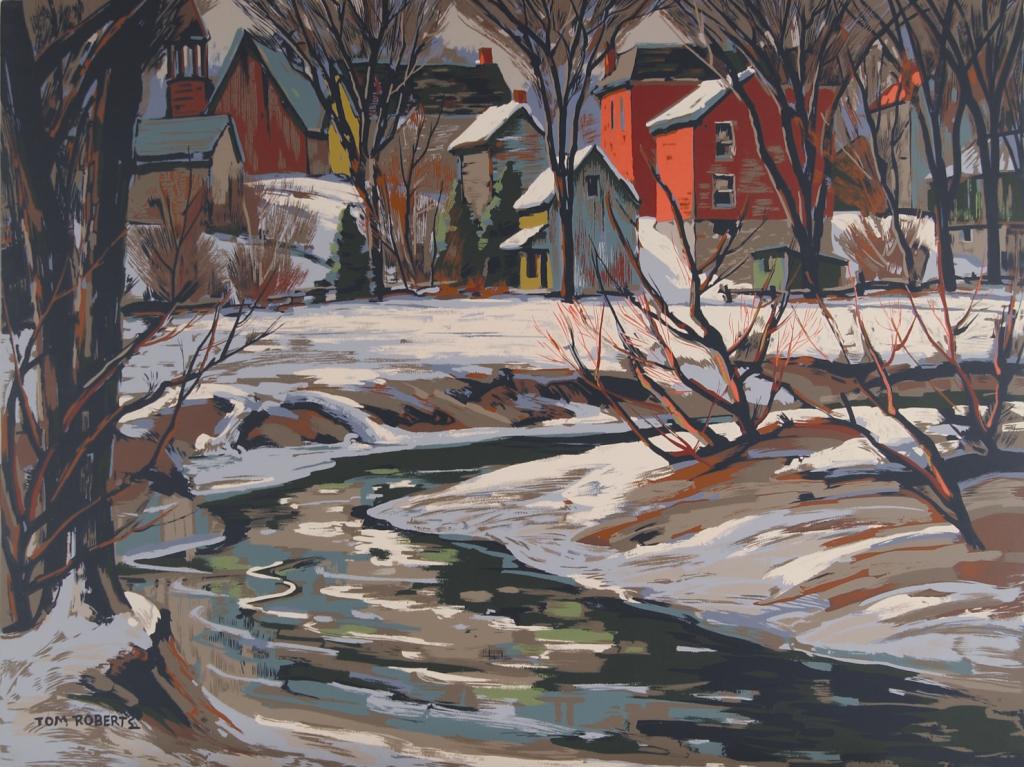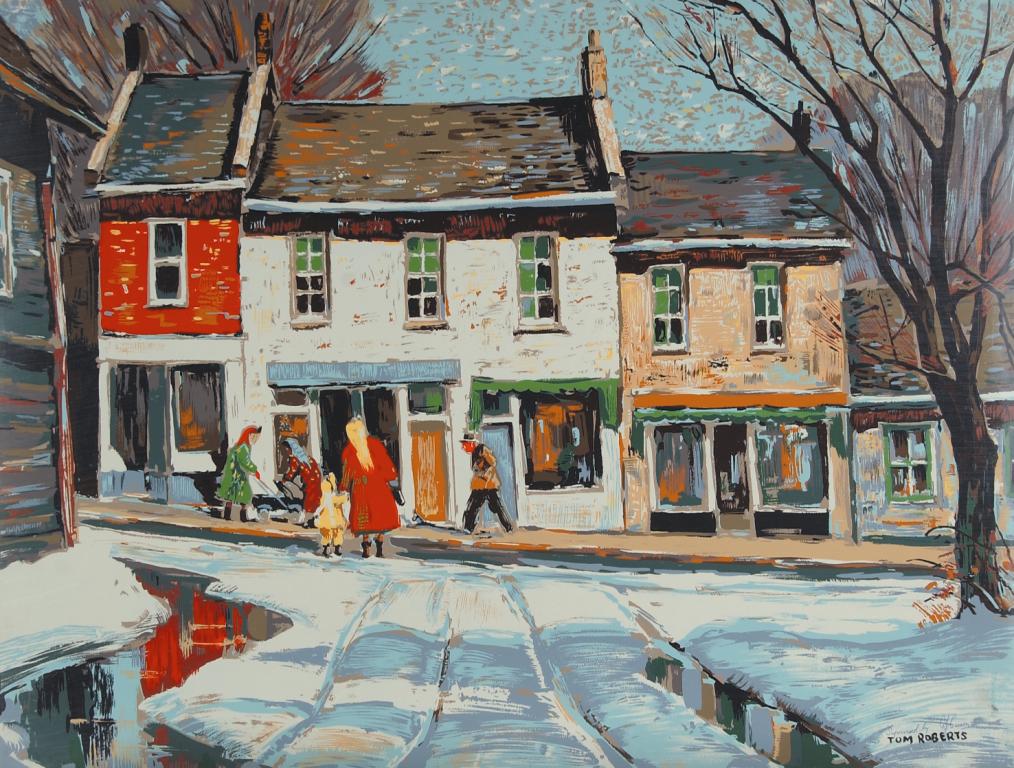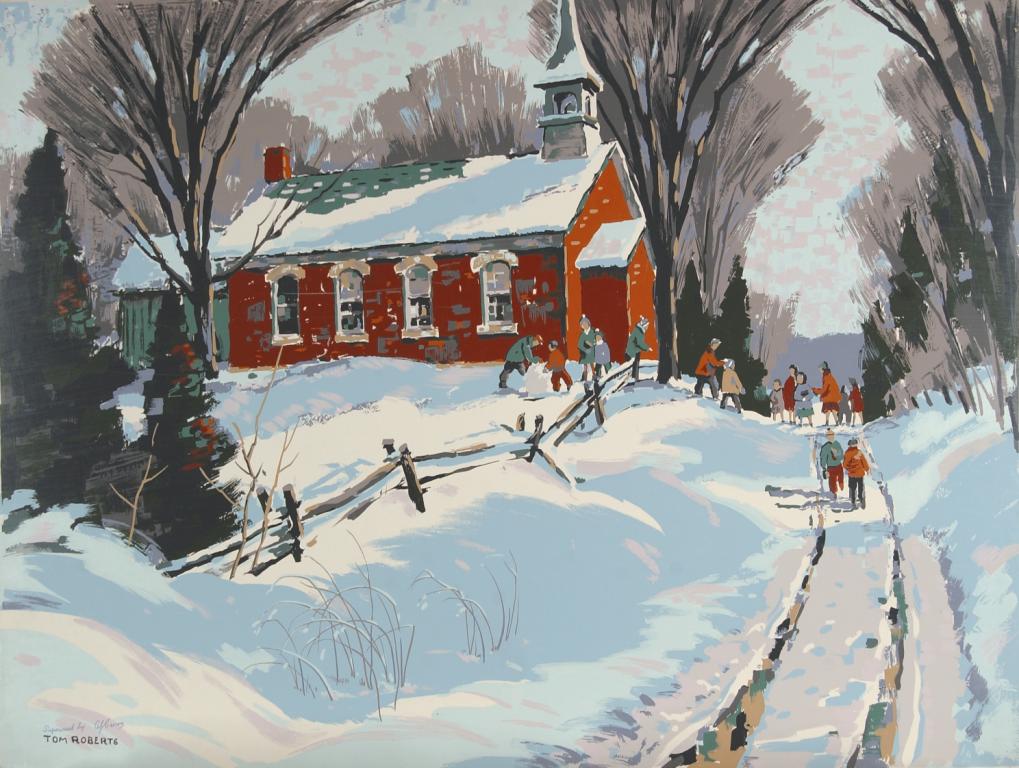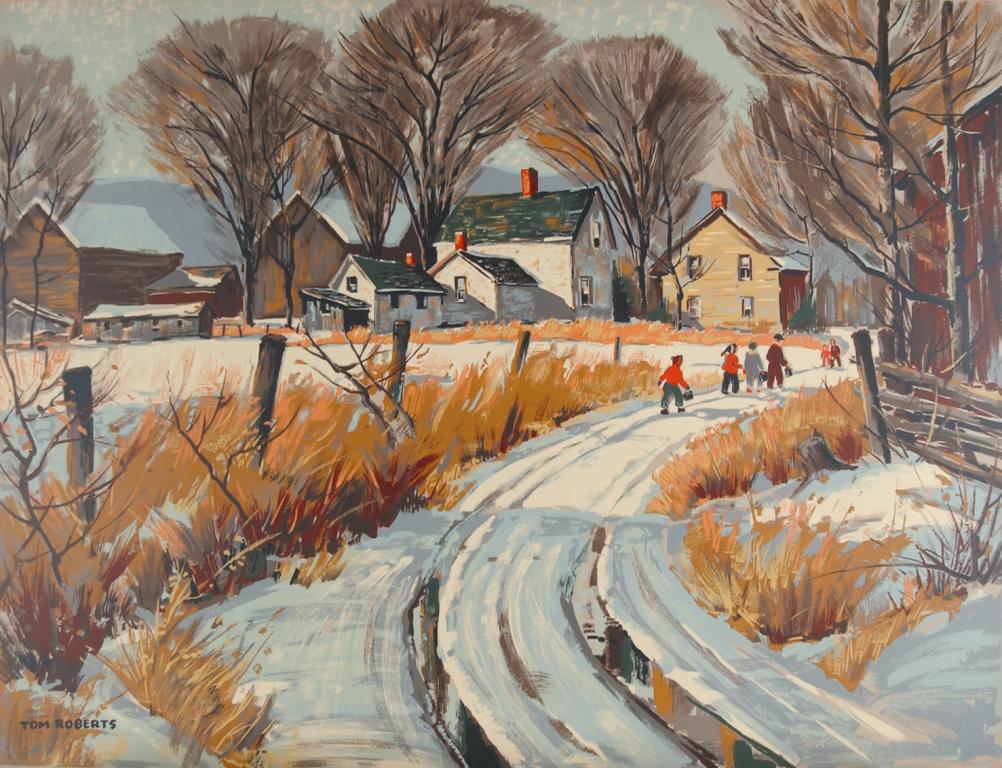Being the grandson of Samuel Roberts (founder of the Roberts Gallery in 1842), Canadian artist Thomas Keith Roberts spent much time in the gallery during his youth and had resolved, by the age of eight, to become an artist.
He studied at Central Technical School under Peter Haworth, Yvonne McKague Housser and Carl Schaeffer and at the Ontario College of Art underJohn Beatty, Frederick Haines and again Yvonne McKague Housser.
After graduating, Roberts worked for Rous and Mann Limited and during World War II, he served with the Royal Canadian Engineers, making pencil and watercolour sketches during his spare time.
In 1949, he won the Ralph, Clarke, Stone Award at the Ontario School of Art, where he showed widely from 1942 until 1968. He also exhibited at the annual Royal Canadian Academy shows, as well as the Canadian National Exhibition and at public galleries, including the Montreal Museum of Fine Arts and the Art Gallery of Hamilton.
Primarily a painter in watercolour, oils, and acrylics, Roberts’ landscapes, urban and country scenes depict Ontario, Quebec and the Maritimes.
In ‘Main Street’, Roberts invites one to enter the painting by way of a small street, beckoning the viewer to walk directly in to the painting and take part in the daily life, activities and culture of this small ‘anywhere Canadian’ village.
This is the universal appeal of Roberts’ work, the shared identity of all Canadians, and the appeal of belonging and being welcome. In ‘Red School House’, Roberts draws us into the painting along a snowy roadway leading uphill to the focal point, a classic red brick building. The boot prints of children between vehicle tracks create a sense of nostalgia for youthful life in a simpler time. This work captured a page in the life of every child in Canada – those last moments before being sequestered in study, in an idyllic one-room school house.
In ‘Road to the Village’, Roberts depicts a group of children following tire tracks down a country road towards a group of buildings. The grand elm trees interspersed with the houses provide a glimpse of lost history, given the decimation of elms in North America by Dutch elm disease decades ago.
In ‘Village in Winter’, Roberts depicts the familiar scene of a heritage village nestled along a small stream, with snow and trees hugging the bank. The stream dominates the foreground and appears to be flowing towards the viewer, but nevertheless pulls one visually into the painting.
Widely collected, Tom Roberts’ work is held in numerous private, corporate and public collections including the Art Gallery of Hamilton, the London Public Library and Gallery, the University of Guelph Art Gallery and the Edmonton Art Gallery. Tom Roberts said, “I want people to feel this wonderful country.”



